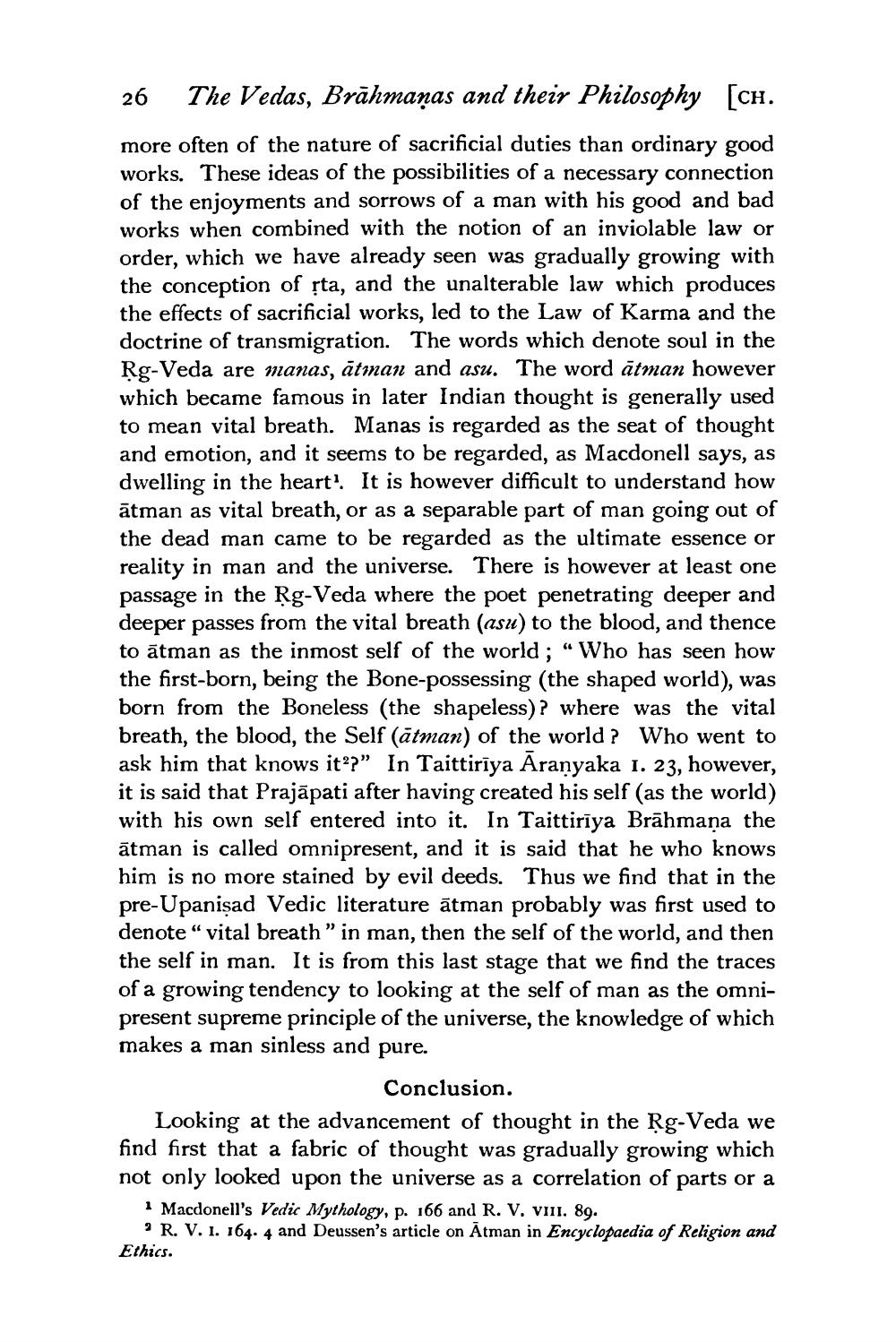________________
26 The Vedas, Brāhmaṇas and their Philosophy [CH. more often of the nature of sacrificial duties than ordinary good works. These ideas of the possibilities of a necessary connection of the enjoyments and sorrows of a man with his good and bad works when combined with the notion of an inviolable law or order, which we have already seen was gradually growing with the conception of sta, and the unalterable law which produces the effects of sacrificial works, led to the Law of Karma and the doctrine of transmigration. The words which denote soul in the Rg-Veda are manas, ātman and asu. The word ātman however which became famous in later Indian thought is generally used to mean vital breath. Manas is regarded as the seat of thought and emotion, and it seems to be regarded, as Macdonell says, as dwelling in the heart'. It is however difficult to understand how ātman as vital breath, or as a separable part of man going out of the dead man came to be regarded as the ultimate essence or reality in man and the universe. There is however at least one passage in the Rg-Veda where the poet penetrating deeper and deeper passes from the vital breath (asu) to the blood, and thence to ātman as the inmost self of the world; “Who has seen how the first-born, being the Bone-possessing (the shaped world), was born from the Boneless (the shapeless)? where was the vital breath, the blood, the Self (ātman) of the world? Who went to ask him that knows it??” In Taittirīya Aranyaka 1. 23, however, it is said that Prajāpati after having created his self (as the world) with his own self entered into it. In Taittirīya Brāhmaṇa the ātman is called omnipresent, and it is said that he who knows him is no more stained by evil deeds. Thus we find that in the pre-Upanisad Vedic literature ātman probably was first used to denote" vital breath" in man, then the self of the world, and then the self in man. It is from this last stage that we find the traces of a growing tendency to looking at the self of man as the omnipresent supreme principle of the universe, the knowledge of which makes a man sinless and pure.
Conclusion. Looking at the advancement of thought in the Rg-Veda we find first that a fabric of thought was gradually growing which not only looked upon the universe as a correlation of parts or a 1 Macdonell's Vedic Mythology, p. 166 and R. V. VII. 89.
R. V. 1. 164.4 and Deussen's article on Ātman in Encyclopaedia of Religion and Ethics.




